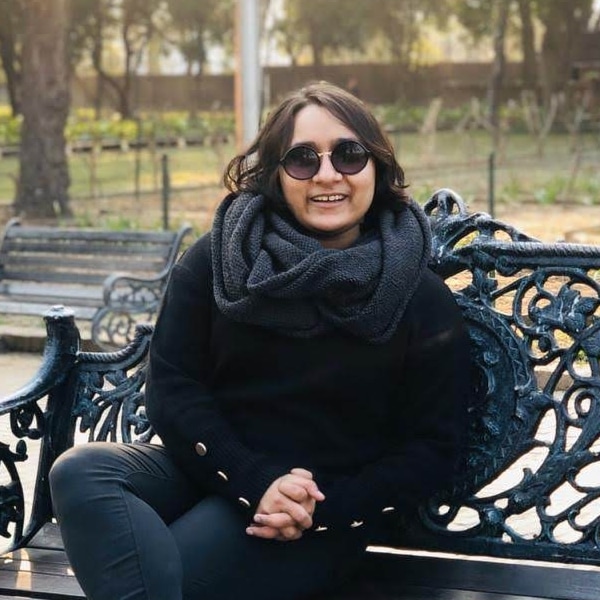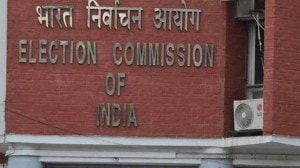
Why in the news?
The Ministry of Tribal Affairs (MoTA) launched the DhartiAaba Janbhagidari Abhiyan, a large-scale outreach campaign for the implementation of its tribal welfare schemes in over 500 districts of the country, aiming to cover 1 lakh tribal dominated villages and habitations. The outreach has been pegged around ‘benefit saturation’ camps, aimed at doorstep delivery of two key flagship schemes – Pradhan Mantri Janjati Adivasi Nyaya Maha Abhiyan (PM JANMAN), launched in 2023, and Dharti Aaba Janjatiya Gram Utkarsh Abhiyan (DAJGUA), which was launched in 2024.
Story continues below this ad
Key Takeaways:
1. The mission has been launched with the objective of raising awareness of individual rights, entitlements, and key government schemes. It ensures doorstep delivery of documents and promote participatory governance through community mobilisation. It focuses on empowering the tribal youth as digital warriors and grassroots change-makers. It was officially launched on June 15 which will run for a fortnight.
2. The website of the MoTA mentions the mission statement as “Bringing Government Benefits to Every Tribal Doorstep.” The mission aims to leave no tribal household behind, with the vision of achieving 100% awareness and benefit saturation by November 15, 2025.
|
Core Principles of the Mission:
↪ Janbhagidari – People’s Participation
↪ Whole-of-Government Approach
↪ Grassroots Impact – Last-Mile Delivery
|
3. Ministry sources said that one of the key objectives of the outreach programme was last-mile awareness on the flagship JANMAN and Dharti Aaba schemes, down to hamlets and the block level. With an outlay for Dharti Aaba provisioned only in this year’s budget, the Centre hopes to popularise uptake of the scheme through the outreach programme.
4. The outreach is also part of the Centre’s ongoing year-long celebration of the Janjatiya Gaurav Varsh. The Centre began this celebration on November 15, 2024, the birth anniversary of Birsa Munda, and the celebrations are a tribute to the contributions of the tribal leader and the tribal community to the freedom struggle.
Story continues below this ad
Pradhan Mantri Janjati Adivasi Nyaya Maha Abhiyan (PM JANMAN)
5. In 2023, Prime Minister Narendra Modi on the occasion of Janjatiya Gaurav Divas (15th November), launched the Pradhan Mantri Janjati Adivasi Nyaya Maha Abhiyan (PM JANMAN) at Khunti, Jharkhand targeting 75 Particularly Vulnerable Tribal Groups (PVTGs) communities.
6. Under this umbrella scheme, nine ministries will implement 11 interventions, including the Pradhan Mantri Gram Sadak Yojana, Pradhan Mantri Gramin Awas Yojana, and Jal Jeevan Mission, among others.
7. It aimed at providing PVTG households and habitations with basic facilities such as safe housing, clean drinking water and sanitation, improved access to education, health and nutrition, road and telecom connectivity, and sustainable livelihood opportunities.
Who are the Particularly Vulnerable Tribal Groups (PVTGs)?Story continues below this ad PVTGs are a sub-classification of the Scheduled Tribes (STs) or a section of STs who are considered more vulnerable than regular STs. The PVTG list was created by the government with the aim to improve on priority the living standards of the endangered tribal groups.
In 1960-61, the Dhebar Commission identified disparities among Scheduled Tribes, leading to the creation of the “Primitive Tribal Groups” (PTG) category. In 2006, this category was renamed Particularly Vulnerable Tribal Groups (PVTGs).
According to the 2011 census, India has a Scheduled Tribe (ST) population of 10.45 crore (8.6 per cent of the population), with 75 communities across 18 states and the Union Territory of Andaman and Nicobar Islands identified as Particularly Vulnerable Tribal Groups (PVTGs). |
Dharti Aaba Janjatiya Gram Utkarsh Abhiyan (DAJGUA)
8. DAJGUA was launched as an umbrella initiative aimed at implementation of welfare measures, with the convergence of 17 line ministries. It was launched by Prime Minister Narendra Modi on the occasion of the birth anniversary of Mahatma Gandhi, from Hazaribagh, Jharkhand in 2024.
9. Construction of hostels, rural electrification, building of homes under the Pradhan Mantri Awas Yojana, livestock support and fisheries support are some of the welfare benefits being implemented through the Dharti Aaba umbrella scheme.
Story continues below this ad
10. The scheme has been named Dharti Aaba (father of the earth) after anti-colonial tribal leader Birsa Munda. In the Union budget, the scheme was allocated Rs 79,156 crore over five years with a central share of Rs 56,333 crore, and state share of Rs 22,823 crore.
 Birsa Munda is held as an icon among the tribal community for his role in Indian tribal millenarian movement. (File Photo)
Birsa Munda is held as an icon among the tribal community for his role in Indian tribal millenarian movement. (File Photo)
| Who was Birsa Munda? |
| Known as “Dharti Aba” (“Father of the Earth”), Birsa organised the “Ulgulan” or the Munda Rebellion against British oppression in the late 1890s. He was born on November 15, 1875 which is celebrated as “Janjatiya Gaurav Divas” to honour his contribution to the tribal freedom movements. The Munda rebellion led to the enactment of the Tenancy Act (1903), which recognised the khuntkhatti system. The Chotanagpur Tenancy Act (1908) later banned the passage of tribal land to non-tribal folks. |
Khuntkhatti system is a system of land ownership practised by Mundas of Chotanagpur which provides ownership of land among all the families of the same clan, who cleared the forest and made land cultivable, without the involvement of landlords.
BEYOND THE NUGGET: World Sickle Cell Awareness Day (19th June)
1. Under the DhartiAaba Janbhagidari Abhiyan, the MoTA is also organising a Sickle Cell Awareness Campaign on 19th June on the occasion of World Sickle Cell Awareness Day (19th June) to raise awareness about sickle cell disease (SCD) and its impact on individuals, families and communities worldwide.
2. Sickle cell disease (SCD) is an inherited group of blood disorder which is genetic in nature. It is usually transferred from parents to the child during birth i.e. both the parents can be carries of SCD.
3. Healthy RBCs are round in shape, which moves through small blood vessels and carries oxygen to all parts of the body. In someone who has SCD, the RBC becomes sticky and hard and start to look like C- shaped similar to that of a farm tool ‘sickle’. The sickle cells die early, which causes a constant shortage of RBC, which leads to low oxygen carriers in the body.
Story continues below this ad
4. SCD can lead to shortage of RBC which makes the patient anaemic leading to Sickle cell anamia. This can lead to severe haemolysis, persistent anaemia and affects the functioning of other organs in the later stages. Common symptoms are anaemia, jaundice, liver and spleen enlargement.
5. This disease is commonly found among tribal communities. It poses a significant threat to the future and existence of our indigenous populations, and it is imperative to prevent the spread of this disease in a timely manner. Notably, the only prevention lies in a timely diagnosis through cost-effective and large scale screening camp along with marriage counselling, DhartiAaba Abhiyan aims to provide that.
6. In the Union Budget for the financial year 2023-24, the government had announced the launch of the national campaign “Sickle Cell Anaemia Elimination Mission 2047” to eradicate this challenge of sickle cell.
Post read question
Consider the following statements about Particularly Vulnerable Tribal Groups (PVTGs) in India: (UPSC CSE 2019)
1. PVTGs reside in 18 States and one Union Territory.
Story continues below this ad
2. A stagnant or declining population is one of the criteria for determining PVTG status.
3. There are 95 PVTGs officially notified in the country so far.
4. Irular and Konda Reddi tribes are included in the list of PVTGs.
Which of the statements given above are correct?
(a) 1, 2 and 3
(b) 2, 3 and 4
(c) 1, 2 and 4
(d) 1, 3 and 4
(Source: Birsa Munda, tribal.gov.in, Particularly Vulnerable Tribal Groups (PVTGs), How the PM JANMAN scheme can help Particularly Vulnerable Tribal Groups, Centre’s mega outreach campaign aims to push flagship tribal welfare schemes PM JANMAN, Dharti Aaba, What is Sickle Cell anaemia?)
Story continues below this ad
Subscribe to our UPSC newsletter. Stay updated with the latest UPSC articles by joining our Telegram channel – IndianExpress UPSC Hub, and follow us on Instagram and X.
🚨 Click Here to read the UPSC Essentials magazine for June 2025. Share your views and suggestions in the comment box or at manas.srivastava@indianexpress.com🚨


 Birsa Munda is held as an icon among the tribal community for his role in Indian tribal millenarian movement. (File Photo)
Birsa Munda is held as an icon among the tribal community for his role in Indian tribal millenarian movement. (File Photo)






























